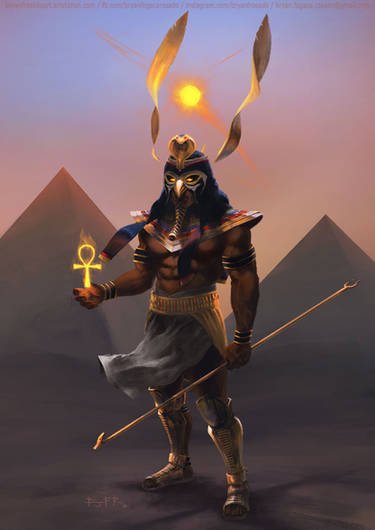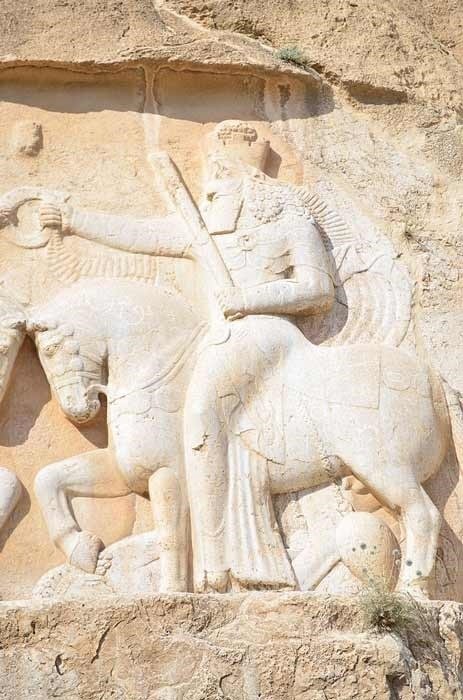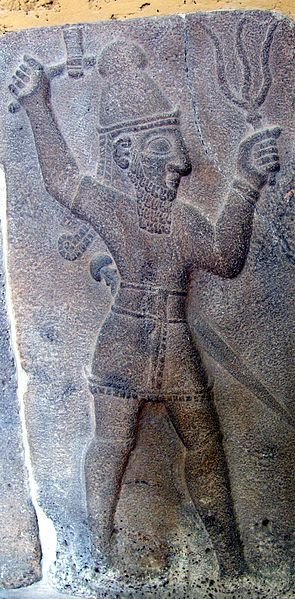Lent: Day 3 What Does God Look Like?
The Wood Between the Worlds (By Brian Zahnd)
chapter 3: God Revealed in Death
“And what is the climactic, definitive moment of God’s self revelation in Christ? It is the central event in the gospel story - the crucifixion. The crucifixion is the pinnacle of divine self-disclosure. Jesus told the crowds in the temple, ‘When you lift up the Son of Man, then you will know that I am (John 8:28)…When we behold Christ crucified, we can say this is exactly what God is like! Being disguised under the disfigurement of an ugly crucifixion and death, Christ upon the cross is paradoxically the clearest revelation of who God is.” (Zahnd, p. 28)
Zahnd begins chapter 3 by referring to some of the most well known god’s of the ancient world and how they have been depicted in art through the centuries. Most of the ancient cultures had hundreds, if not thousands of gods, but they also had their “Supreme Deity” over all other gods. Take a look…
Egyptian sun god, Ra
Babylonian god of thunder, Marduk
Zoroastrian (Persian) god, Ahura Mazda
Canaanite god of storms and fertility, Baal
Greek god of gods, Zeus
What does our God look like? The blonde hair, blue-eyed Jesus doesn’t give off the “King of kings, and Lord of lords” look, does it?
For many Christians, the preferred image of God is the description of Jesus in Revelation 19 - Riding on a white horse, eyes of fire, sword coming out of his mouth, and a robe dipped in blood. That sounds fierce enough.
We prefer our God to look more like a lion than a lamb, let alone a lamb that was slain.
There’s an interesting scene in Revelation 5 when John is told to look at the Lion of the Tribe of Judah, but when he looks, he sees something other than a lion… “Then I saw a Lamb, looking as if it had been slain, standing at the center of the throne…” (Rev. 5:6)
John heard a song being sung in the throneroom of heaven, a song of victory that makes me wonder whose blood is on the robe of the rider on the white horse.
“You are worthy to take the scroll
and to open its seals,
because you were slain,
and with your blood you purchased for God
persons from every tribe and language and people and nation.
You have made them to be a kingdom and priests to serve our God,
and they will reign on the earth“Worthy is the Lamb, who was slain,
to receive power and wealth and wisdom and strength
and honor and glory and praise!” (Rev. 5:9-10, 12)
What if the cross isn’t a momentary defeat nullified by the resurrection? What if the image of Jesus on the cross is supposed to be THE picture of God in His most glorious moment, and the clearest revelation of who God is? We don’t have to wonder. We need only see what Jesus says about it.
After Jesus’ triumphal entry into Jerusalem as recorded in John 12, the disciples and others in the crowd thought that this was the beginning of Jesus’ rise to power. Some visiting Greeks were in town for the Passover feast, and they asked the disciples to take them to see Jesus.
Look at what Jesus says when a group of adoring fans approach him…
“The hour has come for the Son of Man to be glorified. Very truly I tell you, unless a kernel of wheat falls to the ground and dies, it remains only a single seed. But if it dies, it produces many seeds…Now my soul is troubled, and what shall I say? ‘Father, save me from this hour’? No, it was for this very reason I came to this hour. Father, glorify your name!…Now is the time for judgment on this world; now the prince of this world will be driven out. And I, when I am lifted up from the earth, will draw all people to myself.’ He said this to show the kind of death he was going to die.” (John 12:23-24, 27-28, 31-33)
In John 13 during the last supper, as time was coming to a close and Judas had already left to meet up with the religious leaders and Roman soldiers, Jesus tells the disciples, “Now the Son of Man is glorified and God is glorified in him. If God is glorified in him, God will glorify the Son in himself, and will glorify him at once.” (John 13:31-32)
I am wondering if we (Protestants) shouldn’t be so quick to take Jesus off the cross. Perhaps we should take a longer look instead of rushing to the empty tomb. Indeed, without the empty tomb, the crucifixion of Jesus of Nazareth is just a tragic injustice against a really good man. It’s precisely because he rose from the dead that the cross isn’t a momentary set back, but it is the very reason that angels in heaven and all creation sings out, “Worthy is the Lamb, who was slain, to receive power and wealth and wisdom and strength and honor and glory and praise!” (Rev. 5:12)
Paul suggests in Philippians 2 that the reason why Jesus was given the name that is above every other name, and the reason why every knee will bow, in heaven, and on the earth, and under the earth, and every tongue will confess that Jesus is Lord is because…Jesus…
Who, being in very nature God,
did not consider equality with God something to be used to his own advantage;
rather, he made himself nothing
by taking the very nature of a servant,
being made in human likeness.
And being found in appearance as a man,
he humbled himself
by becoming obedient to death—
even death on a cross! (Philippians 2:6-8)
Jesus took no shortcut to glory. When men mocked him with a crown of thorns, he was THEN crowned as King of kings, and Lord of Lords!
What does it mean that God looks like a lamb who was slain?
“To see Christ upon the cross is to see into the very depths of the heart of God. Where once in our distant pagan past we imagined there lurked monstrous intent threatening harm, we now discover there is only tender compassion. On the cross we encounter a God who would rather die than kill his enemies. When we look through the riven side of Christ into the heart of God, we gaze upon a vast cosmos filled with galaxies of grace.” (Zahnd, p. 33)
Then I heard every creature in heaven and on earth and under the earth and on the sea, and all that is in them, saying:
“To him who sits on the throne and to the Lamb
be praise and honor and glory and power,
for ever and ever!” (Rev. 5:13)
Amen! Amen!






